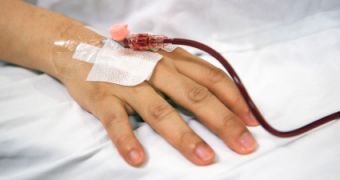This past Monday, Dr. Radu Silaghi-Dumitrescu with the Babeş-Bolyai University in Cluj-Napoca, Romania announced that he and his colleagues had successfully created a new type of artificial blood that could be used in human patients without fearing potentially life-threatening side effects.
Talking to members of the press, Dr. Radu Silaghi-Dumitrescu explained that, although several other researchers had tried to engineer artificial blood, their attempts sooner or later ended in failure due to the fact that the blood they created was unable to withstand mechanical and chemical stress.
Specifically, these types of artificial blood often caused toxic by-products to form when exposed to real-life conditions, meaning that actually using them in transfusions was pretty much out of the question.
The artificial blood that Dr. Radu Silaghi-Dumitrescu and his colleagues have created contains water, salts and a protein known to the scientific community as hemerythrin. Interestingly enough, this protein is extracted from sea worms.
The researchers explain that, unlike hemoglobin, hemerythrin is not easily destroyed when exposed to physical and chemical stress. Therefore, the artificial blood created with it is bound to also keep its integrity when transfused into a living organism.
The artificial blood created by these researchers has thus far been tested on laboratory mice, Descoperă tells us, and the results were encouraging, to say the least.
“Mice treated with this ‘Made in Cluj’ artificial blood did not experience any side effects, and this is precisely what we want,” Dr. Radu Silaghi-Dumitrescu explains.
By the looks of it, this artificial blood is supposed to replace real blood and perform the task of transporting oxygen to cells and tissues only for a few hours, maybe an entire day.
During this time, the body is expected to replace the blood that a person lost during surgery or in the aftermath of a serious injury.
The researchers hope that, in about a year or two, they will be able to roll out clinical trials involving human volunteers, and determine whether or not this artificial blood can be safely transfused into people.
In time, they hope that they will even manage to roll out so-called instant blood, i.e. a mixture of salts and hemerythrin that can easily be transported and which turns into artificial blood when water is added.

 14 DAY TRIAL //
14 DAY TRIAL //